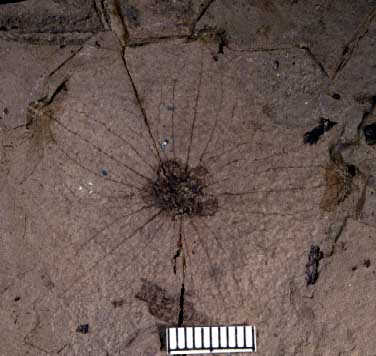The “Florissant flower,” Florissantia speirii, is another iconic fossil from the Florissant Formation. Although more common in the Green River Formation and elsewhere, F. speirii was first described here at the Florissant Fossil Beds. The species is tentatively placed in the Sterculiaceae, the family which includes cocoa (Theobroma cacao), kola nuts, and tropical mahoganies.
The delicate petals of flowers are rarely preserved in the fossil record, but the sepals (modified leaves) of F. speirii formed a tough calyx that protected the flower and aided preservation. Features of the flower suggest that it was pollinated by insects or birds, and its fruits were probably wind-dispersed.
You can see a F. speirii fossil on display in the Visitor Center at the park. The genus name, Florissantia, is also shared by an insect, the planthopper Florissantia elegans.
-Melissa Barton
Photo Credit: Herb Meyer/Florissant Fossil Beds National Monument

